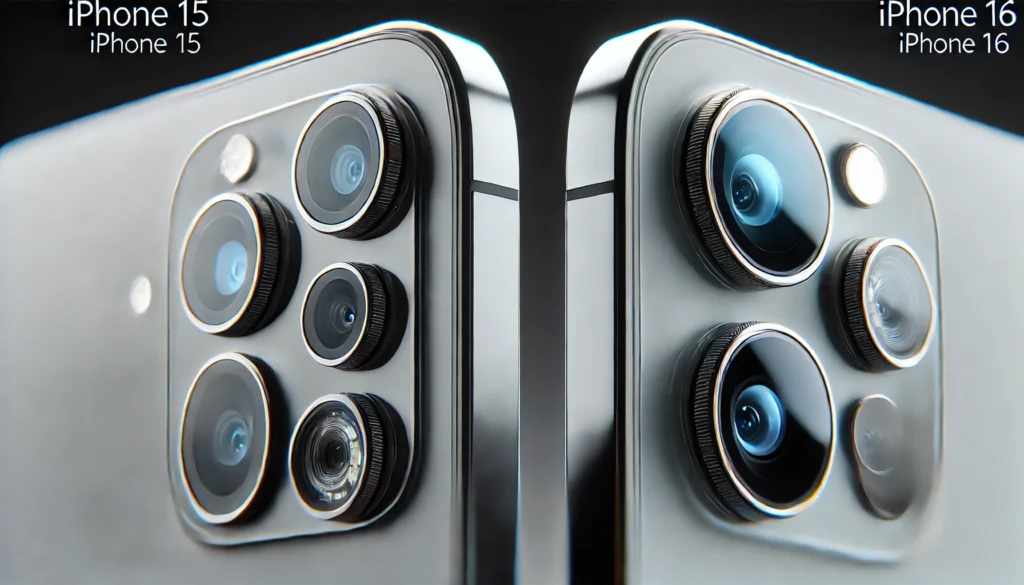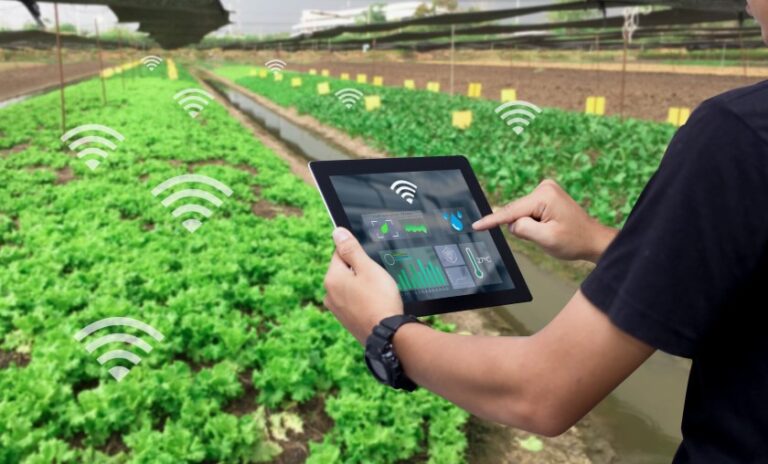In the fast-paced world of technology, Apple’s iPhone lineup consistently offers cutting-edge advancements. The iPhone 15 and the newly released iPhone 16 are no exception, bringing notable improvements in design, performance, and features. For current iPhone 15 users and potential buyers alike, understanding the differences between these two models is essential in determining whether upgrading is worthwhile. In this comprehensive comparison, we’ll dive deep into the major differences between the iPhone 15 and iPhone 16 to help you make an informed decision.
Table of Comparing iPhone 15 and iPhone 16
| Feature | iPhone 15 | iPhone 16 |
|---|---|---|
| Display | 6.1-inch Super Retina XDR OLED, 60Hz refresh rate | 6.1-inch Super Retina XDR OLED, ProMotion (120Hz) |
| Resolution | 2532 x 1170 pixels, 460 ppi | 2556 x 1179 pixels, 460 ppi |
| Processor | A16 Bionic chip, 6-core CPU | A17 Bionic chip, 6-core CPU |
| RAM | 6GB LPDDR5 | 8GB LPDDR5 |
| Storage Options | 128GB, 256GB, 512GB | 128GB, 256GB, 512GB, 1TB |
| Operating System | iOS 17 | iOS 17 with exclusive features |
| Camera System (Rear) | Dual 48MP main, 12MP ultra-wide | Dual 48MP main, 12MP ultra-wide with improved OIS |
| Camera System (Front) | 12MP TrueDepth camera | 12MP TrueDepth camera with better low-light performance |
| Video Recording | 4K video at 24/30/60fps, Cinematic Mode in 1080p at 30fps | 4K and 8K video, Cinematic Mode in 4K at 30fps |
| Battery Life | Up to 19 hours of video playback | Up to 21 hours of video playback |
| Fast Charging | 50% charge in 30 minutes (20W adapter or higher) | 50% charge in 25 minutes (25W adapter or higher) |
| Wireless Charging | MagSafe wireless charging up to 15W | Enhanced MagSafe wireless charging up to 20W |
| Water and Dust Resistance | IP68 rating (maximum depth of 6 meters up to 30 minutes) | IP68 rating (maximum depth of 6 meters up to 30 minutes) |
| Face ID | Yes | Yes, with enhanced AI for faster recognition |
| Weight | 174 grams (6.1 ounces) | 180 grams (6.3 ounces) |
| Dimensions | 147.6 mm x 71.5 mm x 7.4 mm | 147.8 mm x 71.6 mm x 7.5 mm |
| Connectivity | 5G, Wi-Fi 6, Bluetooth 5.3 | 5G, Wi-Fi 6E, Bluetooth 5.4 |
| Price (Starting) | $799 | $899 |
| Colors | Midnight, Starlight, Product Red, Blue, Pink | Midnight, Starlight, Product Red, Electric Purple, Cyan |
Design and Display Changes
A New Aesthetic Approach
One of the key areas of change between the iPhone 15 and iPhone 16 is the design. While the iPhone 15 introduced a sleeker frame with flat edges, the iPhone 16 takes it a step further by incorporating a more rounded, ergonomic design. The materials used in the construction of the iPhone 16 also see a significant upgrade, with stronger glass on the front and back, making it more durable.
The color palette for the iPhone 16 has expanded, with vibrant new shades available, allowing users to express their style more freely. The changes in design are not just cosmetic; they also contribute to better grip and overall comfort.
Display Advancements
When it comes to the display, the iPhone 16 builds upon the impressive OLED panel of the iPhone 15. Both models offer a Super Retina XDR display, but the iPhone 16 features improved brightness and refresh rates, making it an ideal choice for gamers and those who consume a lot of video content.
The 6.1-inch screen of the iPhone 16 has a higher peak brightness compared to the iPhone 15, offering better visibility in direct sunlight. Additionally, the iPhone 16 introduces ProMotion technology, which enables a 120Hz refresh rate, delivering smoother scrolling and more responsive touch interactions compared to the 60Hz refresh rate on the iPhone 15.
Performance and Processor Upgrade
A16 Bionic vs. A17 Bionic
One of the most anticipated upgrades in the iPhone 16 is its new A17 Bionic chip. The iPhone 15, powered by the A16 Bionic, was already a powerhouse, but the A17 Bionic takes performance to a whole new level. Built on a smaller, more efficient 3nm process, the A17 delivers faster processing speeds and better energy efficiency.
The iPhone 16 benefits from an up to 20% boost in CPU performance and a 15% improvement in GPU speeds, making multitasking, gaming, and graphics-heavy applications run smoother and faster than on the iPhone 15.
Enhanced AI and Machine Learning Capabilities
Both the iPhone 15 and iPhone 16 leverage AI and machine learning to enhance user experience, but the iPhone 16’s A17 Bionic chip brings advanced machine learning algorithms that can process data at unprecedented speeds. This enables real-time enhancements in photography, augmented reality applications, and speech recognition.
Camera Enhancements

Photography Like Never Before
Camera quality has always been a defining feature for iPhone users, and both the iPhone 15 and iPhone 16 have stellar capabilities. The iPhone 15 introduced an impressive 48MP primary camera, but the iPhone 16 takes it a step further by improving low-light performance and computational photography.
The iPhone 16 also introduces enhanced optical image stabilization (OIS) and a larger sensor for the primary camera. This results in clearer images, especially in challenging lighting conditions. The 12MP ultra-wide and telephoto lenses on the iPhone 16 have also been fine-tuned to deliver better zoom performance and less distortion in wide-angle shots.
ProRAW and Cinematic Mode Improvements
While the iPhone 15 introduced Apple’s ProRAW format and cinematic mode, the iPhone 16 enhances these features with more dynamic range and improved color accuracy. Users who frequently shoot videos will appreciate the iPhone 16’s 8K video recording capabilities, a significant leap from the 4K limit on the iPhone 15.
Battery Life and Charging
Battery Life for Heavy Users
Apple consistently aims to improve battery performance with each iPhone release. The iPhone 15 already offered great battery life, but the iPhone 16 extends it by up to two more hours, thanks to the efficiency gains from the A17 chip and optimized power management systems.
The iPhone 16 also brings fast charging improvements, allowing users to charge their device from 0 to 50% in just 25 minutes. This is a slight improvement over the iPhone 15, which took around 30 minutes for the same charge.
Wireless Charging and MagSafe Enhancements
Both the iPhone 15 and iPhone 16 support wireless charging, but the latter brings an updated version of MagSafe, allowing for stronger magnetic alignment and faster wireless charging speeds.
Software Features and iOS Compatibility
Exclusive iOS 17 Features
While both the iPhone 15 and iPhone 16 run on iOS 17, the latter benefits from exclusive software enhancements that optimize performance specifically for its hardware. For example, the iPhone 16 comes with more advanced augmented reality (AR) capabilities, thanks to its upgraded AI system.
In terms of user experience, the iPhone 16 also introduces a new feature called “Dynamic Island,” an interactive notch at the top of the screen that houses notifications, widgets, and live activities. This feature is missing from the iPhone 15, adding to the user interface improvements unique to the iPhone 16.
Price and Availability
A Pricey Yet Valuable Upgrade
As with every new iPhone release, pricing is a major factor when deciding whether to upgrade. The iPhone 15 came at a premium price, but the iPhone 16 is even more expensive, reflecting its higher-end features. Depending on storage options, the price of the iPhone 16 starts slightly higher than the iPhone 15’s introductory cost.
While the price difference might be a deterrent for some, the iPhone 16’s improved features and longer lifespan might justify the upgrade for those looking for top-tier performance and future-proof technology.
Availability and Trade-In Options
Apple often provides trade-in deals, and upgrading from an iPhone 15 to iPhone 16 could be more affordable if you leverage Apple’s trade-in program. Both devices are widely available, but the iPhone 16 is likely to be in high demand initially, leading to potential shortages in its first few weeks.





